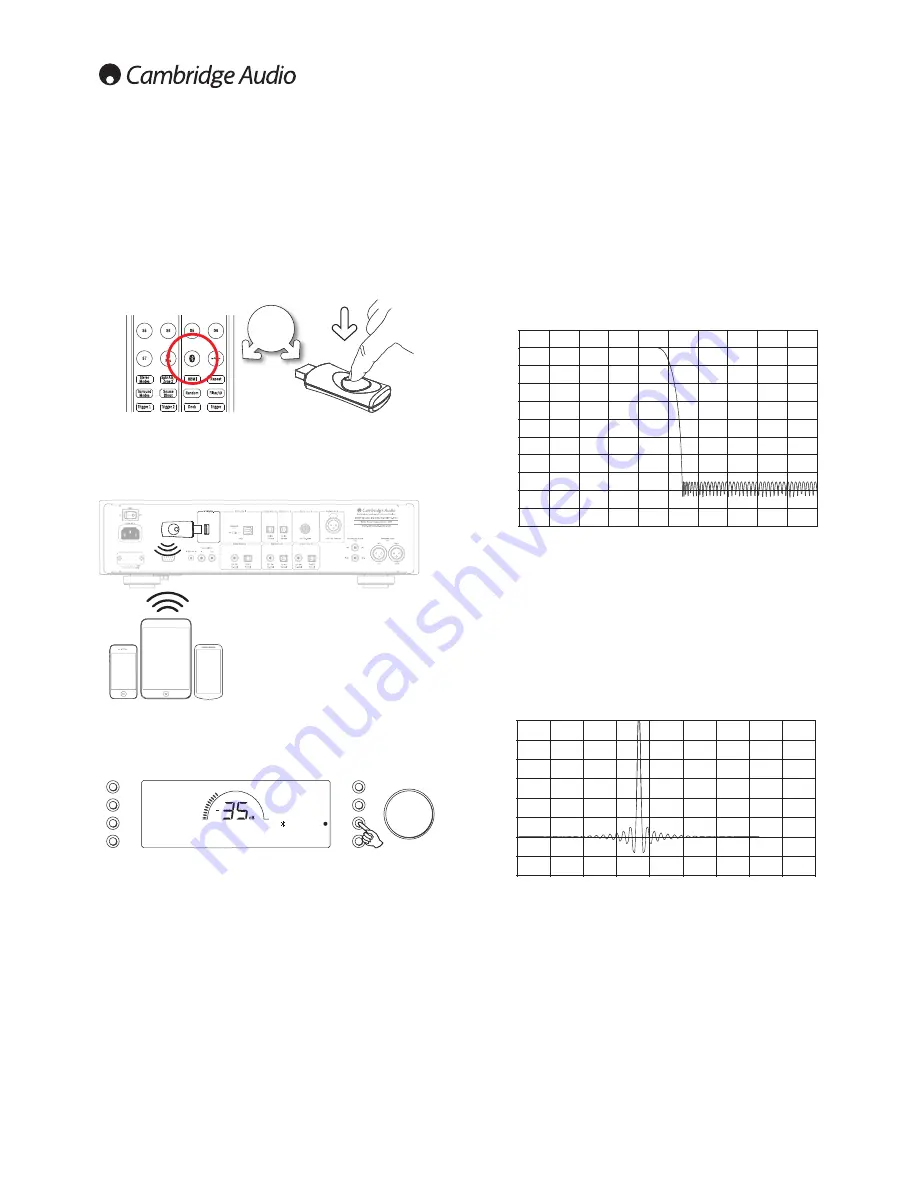
12
The 851D DSP has three different Filter functions: Linear Phase,
Minimum Phase and Steep. All three filters are highly sophisticated
audiophile topologies, optimised specifically for audio playback. In our
opinion, these filters offer excellent sound quality but differ subtly in
optimisation, hence we’ve made all three available to you.
Note:
For clarity, all diagrams show the theoretical response of the DSP
itself, excluding any analogue filtering at the DAC output or the anti-
aliasing filter applied during recording and/or mastering of the digital
source.
Linear phase filter
-80
-60
-40
-20
0
20
-200
-180
-160
-140
-120
-100
0
0.1
0.2
0.3
0.4
0.5
0.6
0.7
0.8
0.9
1
Magnitude (dB)
Frequency response
Frequency response
The Linear Phase filter is a highly regarded audio filter offering low ripple
in both the pass and stop bands, and what is known as constant group
delay. Constant group delay means that audio signals of all frequencies
are always delayed by the same amount when passing through the filter.
All audio is therefore fully time-coherent at the output.
The trade-off with this type of filter is that due to internal feed-forward
in the DSP, its impulse response will exhibit some pre-ringing. In other
words, when excited with a theoretical impulse, the output has both
a small amount of pre- and post-spike amplitude ringing (albeit well
damped).
0
20
40
60
80
100
120
140
160
180
0
Frequency response
Frequency response
Am
plitude
Filters
Bluetooth
The 851D is supplied with a BT100 Bluetooth adaptor. This allows the
851D to receive wireless Bluetooth audio from suitable phones/tablets
and laptops.
To send Bluetooth audio to the BT100 you must first pair your phone/
tablet or laptop with the BT100.
1. Connect the BT100 to the BT100 USB socket on the rear of the 851D.
2. Put the BT100 in pairing mode by pressing and holding the Bluetooth
button on the remote control for 4-5 seconds, or by double pressing
the button on the BT100 itself.
X2
OR
3. Now pair with your phone/tablet/computer (you may need to consult
your Bluetooth device’s user manual for details). You only need to do
this the once, as the BT100 will remember your Bluetooth device the
next time you wish to use it.
BT100
851D
Bluetooth devices
4. With a BT100 installed and paired to your device, press the BTooth
select button or the Bluetooth button on the remote to start listening
to your music.
44.1kHz
Input 1
Input 2
Input 3
Input 4
BNC
AES/EBU
BTooth
USB


































